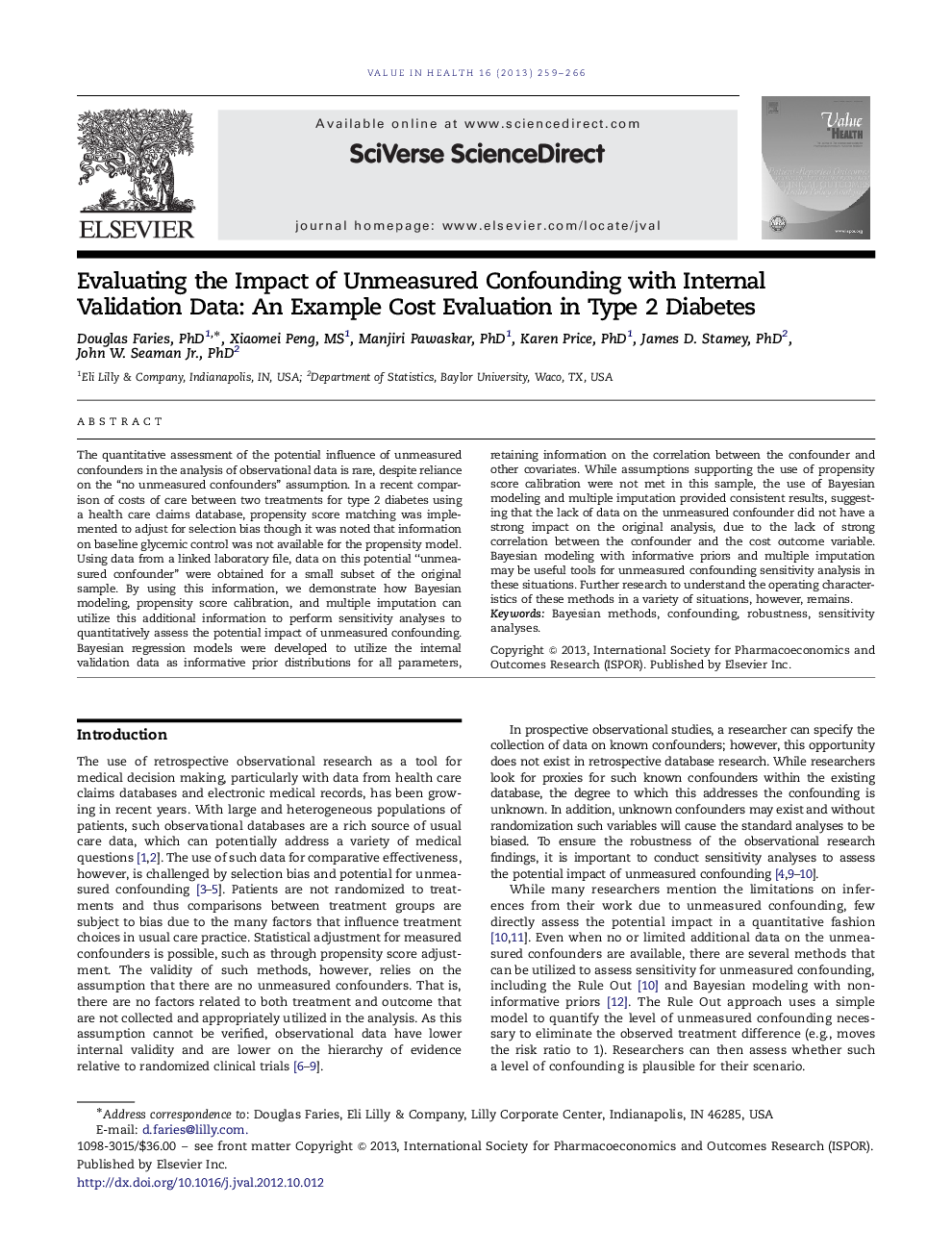| Article ID | Journal | Published Year | Pages | File Type |
|---|---|---|---|---|
| 989771 | Value in Health | 2013 | 8 Pages |
The quantitative assessment of the potential influence of unmeasured confounders in the analysis of observational data is rare, despite reliance on the “no unmeasured confounders” assumption. In a recent comparison of costs of care between two treatments for type 2 diabetes using a health care claims database, propensity score matching was implemented to adjust for selection bias though it was noted that information on baseline glycemic control was not available for the propensity model. Using data from a linked laboratory file, data on this potential “unmeasured confounder” were obtained for a small subset of the original sample. By using this information, we demonstrate how Bayesian modeling, propensity score calibration, and multiple imputation can utilize this additional information to perform sensitivity analyses to quantitatively assess the potential impact of unmeasured confounding. Bayesian regression models were developed to utilize the internal validation data as informative prior distributions for all parameters, retaining information on the correlation between the confounder and other covariates. While assumptions supporting the use of propensity score calibration were not met in this sample, the use of Bayesian modeling and multiple imputation provided consistent results, suggesting that the lack of data on the unmeasured confounder did not have a strong impact on the original analysis, due to the lack of strong correlation between the confounder and the cost outcome variable. Bayesian modeling with informative priors and multiple imputation may be useful tools for unmeasured confounding sensitivity analysis in these situations. Further research to understand the operating characteristics of these methods in a variety of situations, however, remains.
